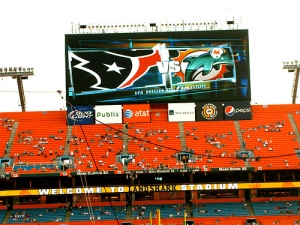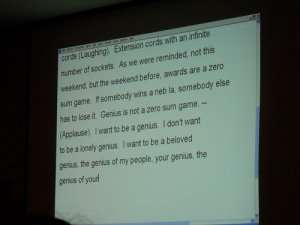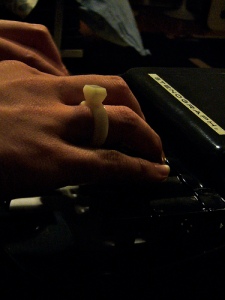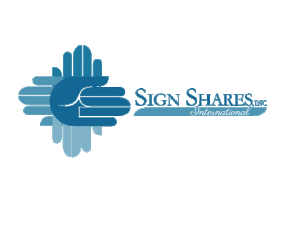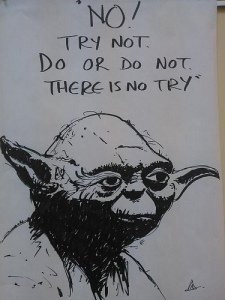Just because someone has hearing loss or deafness doesn’t mean they know which equipment could help them adapt to a world with many sounds.
For example, someone who always used a radio alarm clock who suddenly has hearing loss, wouldn’t know that there’s a technology solution–the vibrating and/or light flashing alarm clock! Most people with hearing loss or deafness have hearing families, so they may not have known about ways technology helps us adapt.
Kudos to Harris Communications for providing a handy question-and-answer page for people with hearing loss and their needs.
While Harris makes some recommendations–and they have useful products–I have additional recommendations.
Amplified, Captioned, and Video Phones
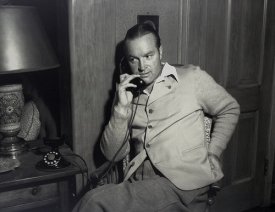
Harris’ first topic was Staying in Touch and they recommended an amplified phone, the Panasonic KX-TGM450S Amplified Phone. Many people use only cell phones. If you need a cell phone, what kind do you get?
Test friend and family members’ phones to see which provide the clearest amplification for you. Which ones sound fuzzy? Which don’t provide enough volume? While I used to use Nokia phones to get enough volume, now Samsung phones have better sound–for me. See which works best for you.
While amplification works for many, it doesn’t give me the accuracy I need to communicate with strangers or conduct work. For those, a captioned phone works. Harris Communications offers captioned phones, though many people qualify for free captioned phones or video phones (for using sign language and/or seeing speakers). Below are some vendors that may provide a phone free to you.
I’ve used both Captioncall and CapTel phones and while the captioning isn’t perfect and can be slow, most of the time it’s a benefit–and the captioned phones can also be programmed to suit your type of hearing loss. They also provide super amplification that is appropriate only for people with hearing loss and isn’t provided with standard phones.
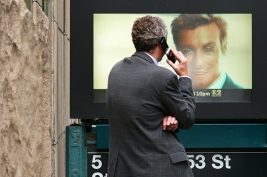
Video phones assist for those who use sign language. People may make or receive calls using a video phone. If you’re the employer of someone who uses sign language, then your employee may have this type of phone, but they might need one for the office. In some cases, it’s free.
Captioned and video phones need special assistance to be wired into an office’s existing system, but I’ve had this done. Support from any of the companies below will assist with the process.
Free Video Phones
Captioned Phones
Skype, Face Time, Google Hangouts, or other Video Chat
One of the reasons employees or students with hearing loss can’t hear as well on the phone is because the quality of sound is less than in real life. Also, we often read lips–whether we know it or not.
Video chat offers people with hearing loss the chance to hear and see what’s said. There’s also usually a chat option so what’s not heard can be typed.
If you’re the employer of someone who uses sign language, they probably use some video communication methods like Face Time.
Ask your employee or student for the best way for you to communicate with them–and don’t pressure them to do what’s most convenient for you. They make extra effort for many interactions, not just the ones with you.
Alarms and Watches

Harris’ second topic was Being on Time. Many people with hearing loss say it’s difficult to wake up because their cell phone, watch, and/or radio alarms don’t do the job.
Enter the vibrating, flashing, or light alarms. Harris Communications recommends the Sonic Alert Sonic Boom Super Shaker Bluetooth Bed Shaker. This vibrating device is controlled by your cell phone. A vibrating disc is set under the mattress and shakes the bed when the alarm goes off.
I prefer a physical clock. My first vibrating alarm clock was the Sonic Alert Boom, but it only had a single alarm! I could have bought one with dual alarms for $5 more.
My advice is to seek a dual alarm. The Sonic Alert Boom clocks come with a vibrating device that slides under the mattress. I can’t feel the device through the mattress–until it vibrates at the appointed time. It can wake me up. Make sure that the alarm you want comes with bed shaker and isn’t a separate purchase.
Now, I have the Sonic Alert Sonic Bomb Jr, which has dual alarms and a stronger sound that I can program to be in my hearing range (a deeper buzzer). While the sound won’t wake me up by itself, once I’m awake, it keeps me from snoozing too long. The clock also has a snooze button. It has a flashing light that if placed in front of you may also help. This alarm clock has stronger signals than the Sonic Alert Boom, so I recommend this one.
They also make travel alarms with bed shakers. I have the Sonic Alert Traveler. It’s not as strong as the other alarm clocks, but better than nothing when I travel!
To supplement a travel alarm clock, I order an ADA kit for my hotel rooms, which should include a flashing door bell alarm. Tip: ask for the manager if hotel staff don’t know where it is. Hotels are required to have this.
Then, I order room service coffee when I need to wake up, so the flashing door bell when they bring me coffee is a second way to wake up. The ADA kits have vibrating alarms, but I haven’t programmed one of those correctly, so I bring mine.
If you’re used to waking up with your watch alarm, Harris has a series of vibrating watches, including a smart watch.
There are more options for waking up, including alarms that gradually lighten the room.
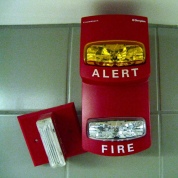
Devices can be connected to door bells and fire alarms, creating a complex system of light signals for the home, office, or classroom.
Sleep Assistance Technology
People with hearing loss may have tinnitus, which is a ringing or buzzing in the ears. Devices with sounds may assist with this. Harris Communications recommends the Sound Oasis Therapy Machine. Some of the sounds the machine makes may mask the sounds of tinnitus.
I have tinnitus and it can disrupt sleep. Some eye drops, and some medications cause my ears to ring loudly. Whenever the ringing gets out of control, I examine what I put in my mouth or on my body that was new and different that day. Most of the time, when I stop using the new vitamin, medicine, or eye drops, the tinnitus gets quieter.

My old-school method for out-of-control tinnitus was to play music or leave a TV running with sound because tinnitus is less disruptive with other sounds. I also read to get my mind off the noise. Wearing hearing aids reduces the disruption for some, while others say it makes tinnitus worse. There are tinnitus vitamins on the market, but the two I tried made it worse.
Other Cool Devices
Notification Systems
Besides the devices I mentioned, there are a variety of tools to use. A light flashing device can be connected to your door bell or vibrating alarm clock. Check out Harris Communication’s Notification Systems, which include these visual light signalers, as well as baby crying and fire alarms for people who are Deaf or Hard of Hearing.
Cell Phone Accessories
There’s another device that lights up when your cell phone rings. I had this one, but it went off too often because it was triggered by my cell’s email notifications too, but there are other brands and Cell Phone Accessories here, including bluetooth loops.
Paging Systems
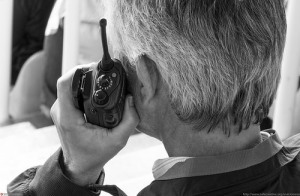
Many businesses are concerned about the ability to reach their employees, especially if they use on-site radios, such as in technical facilities. One option is for them to text you and you to have a lighting, vibrating alert set. Another option is a lighting, two-way personal pager system.
Meetings

The old school option is to sit closest to the main speaker. However, in classrooms and at meetings, often many people speak, sometimes from across the room or from behind, cutting off a person’s ability to read their lips or capture quality sound.

Speakers may also turn their back to the audience, disabling any lip reading, which is essential to people using their vision to supplement hearing loss or deafness.
At the bare minimum, a person with hearing loss would need to sit within a few feet of the main speaker. They need an agenda, outline, and/or handouts beforehand to assist them with determining what topics are being discussed–these make lipreading easier. Speakers should always face the audience, not turn away. Any videos or TV should be captioned.

If you use a TV for your presentation, televisions since the 1990’s have captioning capability. Enable it. Learn how to do this before the meeting since doing this for the first time can take a while or may be incredibly fast. Don’t try to make it pretty, if it has those options. All caps with a black background offers good visibility. Make sure the person needing captions sits close enough to the TV to read them easily–even if they need to change seats to do so. Reserving an extra viewing seat near the TV makes it easier to offer this accommodation.
If you show videos from YouTube, make sure that when you click the captioning option on the video, that captions are on the video. If the video doesn’t have captions, select another video with a similar topic that does. YouTube has many videos to select from, even for the exact same topic. They also have the option for you to create captions for your own video content.
If you bring DVDs or even older VHS tapes, ensure that they have captions. Look on the back of the box for clues. Does the box say “CC” for Closed Captioned, or does it say it includes “Subtitles for People who are Hard of Hearing”? Sometimes you have to look hard for it. Westerns, music videos, and Discovery Channel products are notorious for not providing captioned content, so be on the lookout.
While at first using captions is different, many people who think they hear well discover that they have missed many words the captions show them. Captioned videos are a tool that benefit more employees or students than you realize!

If your employee or student is functionally deaf, and a good sign is if they use sign language, then a sign language interpreter may be required for the entire meeting. The interpreter would request captions for videos. Ask your employee what they need, again, without pressure from you about the costs. We can save money many ways, but let it not be in ways that discriminate employees and students.

In some cases, a student or employee may be functionally deaf but not know sign language. If this is true, live captioning, or CART, can be requested and a person with a stenography kit can type what is said at the rate of 250 words or so a minute. This is if your content is involved. In many cases, a note taker won’t work well unless they’ve been trained.
 Do you need to request a sign language interpreter or CART? Contact Sign Shares 24/7/365 and we can help.
Do you need to request a sign language interpreter or CART? Contact Sign Shares 24/7/365 and we can help.
Loops and Assistive Listening Devices
A loop is a system that can feed sound directly into a person’s hearing aid, offering them a chance at direct sound. Portable loops enable them to take the device from place to place.
I’ve used three portable loops for work and school. My favorite was from Williams Sound. I take it with me, push a button on my hearing aids and a button on the loop and we’re connected and I hear more clearly those sounds around me, which is better for small group participation in a large room, when I need to hear the people near me most.

Assistive Listening Devices, called ALDs, are generally more appropriate for people with mild to moderate hearing loss, but there are a few options for those with greater hearing loss.
These devices generally use two devices. One receives sound, the other transmits it. They communicate to each other via FM radio, which means the sound from one box to the other is pure.
ALDs work well in classrooms, meetings, and churches, when the speaker wears the transmitter and the person with hearing loss holds or wears the receiver. Since the receivers often have microphones too, it’s possible at times to need only the receiver.
When I was in college, my hearing loss was moderate, and the college provided me with a Williams Sound Pocketalker Pro. I had to remove one of my hearing aids to use it but I was blown away with the superiority of this sound over my hearing aids in a classroom. Wow. The microphone on the device is awesome. Buy an extra windscreen if you purchase one of these. Since the microphone sticks out, the microphone cover, or windscreen, gets the most wear and tear.
When teaching with severe hearing loss, I used the Comfort Audio Contego FM system with a neck loop so I didn’t have to keep track of my receiver–I wore it around my neck. My transmitter was placed at the back of the classroom or near a group of students I wanted to hear best. Both the transmitter and receiver paired with my hearing aids, so I didn’t have to remove them.
At this level of hearing loss, it was a temporary and not a permanent solution, but it was better than using hearing aids alone.
The Comfort Audio Contego FM system would work well for someone with mild to moderate hearing loss, but I would recommend the Pocketalker first, since it’s an affordable, quality product with great amplification and clarity.
Old School Tools
Mirrors

One of the cheapest assistive technology items for someone with hearing loss in an office or home is a mirror. Since people who are Deaf or Hard of Hearing often don’t hear people approach, or know when someone is standing behind them, this leads to shock and sometimes a surprised scream when co-workers magically appear.
Place a mirror on the wall in front of your normal work stations and you can catch movement behind you and have less surprises by co-workers whose approaching footsteps you can’t hear. There are doormats that flash lights when people enter the room if this is a bigger problem than a mirror can solve.
Office/Work Space Organization

Ideally, if you have hearing loss or deafness, placing your desk or chair facing the door or the most co-workers is the best option. If you have an enclosed office, then placing the desk with your back to the wall and face facing the door will help. If you have a work area that is too noisy, request a quieter area where it will be less stressful to communicate.
Learn Some Sign Language
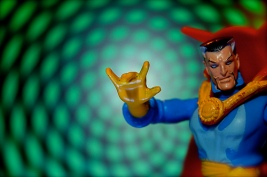
There are places online where you can learn some sign language, and there are also sign language dictionaries. If you and the employee or student share some signs, it cuts down on confusion and miscommunication. Every location has specific vocabulary and necessary emergency signals, plus there are common communication signs that could benefit anyone with hearing loss or deafness and create a welcoming environment.
Lifeprint.com has an ASL University that has videos teaching sign language for free. Here is the 100 First Signs.
Want to learn some specific words in sign language? Use a sign language dictionary!
Signing Savvy has an extensive American Sign Language dictionary. You can also use Google to help you find words in sign language by typing the word you want + American Sign Language.
Disclaimer: While I mention products from Harris Communications, I was not paid by them nor do I receive any funds for my reviews. I don’t and have never worked for them. I have purchased several products from them and am thankful that Harris Communications has been a one-stop shop for me and others who have hearing loss or deafness.


